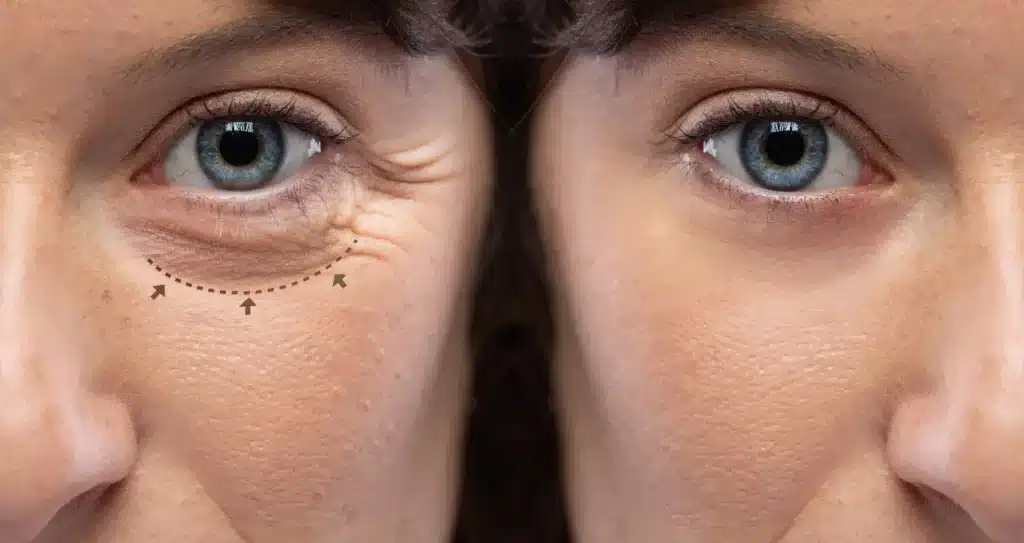Eye color is primarily determined by the amount and distribution of melanin in the iris, with brown being the most common color globally. Studies have shown that eye color can sometimes change due to age, disease, and medication. One such medication known to affect eye color is Lumigan.
Lumigan, primarily used to treat glaucoma by reducing intraocular pressure, contains the active ingredient bimatoprost. This medication can increase the amount of melanin in the iris, potentially leading to a permanent darkening of eye color over time.
This article will delve into how and why Lumigan can cause changes in eye color, exploring the mechanisms behind this phenomenon and what patients need to be aware of when using this medication.
Key Takeaways
- Lumigan, a medication containing bimatoprost, has been associated with the side effect of changing eye color.
- The mechanism behind this phenomenon involves the stimulation of melanocytes in the iris, leading to increased pigmentation.
- Patients with lighter-colored eyes are more likely to experience noticeable changes in eye color.
- Healthcare providers should be aware of this side effect and its implications for patient care and counseling.
About: Medical Spa RX provides medical practices with premium products at the best prices. If you’re looking to buy Lumigan online for your practice, the sales representatives at Medical Spa RX can give you guidance.
How Lumigan Can Change Eye Color

Bimatoprost, an active ingredient in Lumigan, effectively reduces intraocular pressure by enhancing the fluid drainage process in the eye, making it a valuable treatment for glaucoma.
However, bimatoprost also stimulates melanin production in the iris, increasing pigmentation. This effect can gradually darken lighter-colored eyes as the heightened melanin production turns the iris a deeper shade.
As melanocyte activity in the iris intensifies, individuals with lighter eyes may experience a noticeable change in eye color. Lumigan can cause this shift by increasing brown pigmentation, often resulting in a permanent darkening of the eye. This change is more pronounced in those with light-colored irises and can lead to asymmetry, especially if only one eye is treated.
Incidence and Progression of Eye Color Changes

Clinical studies have shown that Lumigan can increase brown pigmentation in the iris. This change is due to increased melanin production in the iris’s melanocytes.
- According to a study, 20,141 people reported side effects when taking Lumigan. 39 of these patients (0.19%) have experienced color change.
- The pigmentation changes are more likely to occur in individuals with mixed-color irises, such as those with blue-brown or green-brown eyes.
Several factors influence the rate and extent of pigmentation changes with Lumigan. These include:
- Duration of Use: The longer the medication is used, the higher the likelihood of developing pigmentation changes. Most cases are reported after 6 to 12 months of continuous use1.
- Eye Color: Individuals with lighter eye colors, such as blue or green, are more susceptible to noticeable changes.
- Age and Gender: Older adults and women are more likely to experience these changes.
The pigmentation changes caused by Lumigan are generally permanent, even after discontinuing the medication. This is a significant consideration for patients concerned about cosmetic changes. The progression of eye color change is gradual, often taking several months to become noticeable. In comparison, Lumigan vs. Xalatan, another glaucoma medication, shows that Xalatan (latanoprost) has a similar side effect profile, but the incidence rate may vary.
Implications for Patients and Healthcare Providers

The possibility of a permanent change in eye color can have significant psychological effects on patients. For some, their eye color is a core part of their identity, and changes can lead to distress or dissatisfaction with their appearance.
This can be particularly impactful for individuals with lighter eye colors, who may experience more noticeable changes. Healthcare providers should be sensitive to these concerns and provide support to help patients cope with emotional or psychological distress.
To effectively monitor and manage eye color changes, healthcare providers should follow these guidelines:
- Baseline Documentation: Before starting Lumigan, document the patient’s baseline eye color with photographs. This provides a reference point for future comparisons.
- Regular Monitoring: Schedule regular follow-up appointments to monitor any changes in eye color. This can help in early detection and management of any side effects.
- Patient Reporting: Encourage patients to report any noticeable changes in their eye color promptly. This allows for timely intervention and support.
Patient Education and Counseling
Educating and counseling patients about the potential for eye color changes is essential. Providers should:
- Inform Patients: Clearly explain the risk of eye color changes, emphasizing that these changes are usually permanent. Discuss the likelihood based on individual factors such as eye color and duration of use.
- Discuss Alternatives: If the risk of eye color change is a significant concern, discuss alternative treatments with a lower risk of this side effect.
- Provide Support: Offer psychological support and counseling to help patients manage any distress related to changes in their appearance. This can include referrals to support groups or mental health professionals if needed.
Conclusion
Lumigan drops can lead to darkening of eye color, particularly in individuals with lighter eyes, by increasing melanin production in the iris. These changes occur gradually and are often permanent, even if Lumigan is discontinued.
Although rare, these changes can be significant for some patients. Being informed about this potential side effect allows healthcare providers to guide patients through their treatment options more effectively, ensuring they can make well-informed eye care decisions.
FAQs
1. What is Lumigan, and how does it change eye color?
Lumigan is a medication used to treat certain eye conditions. Its active ingredient is bimatoprost, which can cause a gradual change in the color of the eyes.
2. Why does Lumigan change the color of my eyes?
The reason behind this lies with its main component, bimatoprost. This substance increases melanin production in your iris, leading to darker shades.
3. Is the eye-color change caused by Lumigan permanent?
The alteration in eye color due to Lumigan use tends to be lasting and may not reverse even after you stop using the medication.
4. Are there any other side effects of Lumigan besides changing eye color?
While changing eye color is one noticeable effect, others include redness or irritation around the eyes, increased eyelash growth, or darkening of skin near the application area.
References
American Academy of Ophthalmology. (2022). Bimatoprost (Lumigan) for glaucoma. Retrieved from https://www.aao.org/eye-health/drugs/bimatoprost
Brubaker R. F. (2001). Mechanism of action of bimatoprost (Lumigan). Survey of ophthalmology, 45 Suppl 4, S347–S351. https://doi.org/10.1016/s0039-6257(01)00213-2
Teus, M. A., Arranz-Márquez, E., & Lucea-Suescun, P. (2002). Incidence of iris colour change in latanoprost treated eyes. The British journal of ophthalmology, 86(10), 1085–1088. https://doi.org/10.1136/bjo.86.10.1085



















